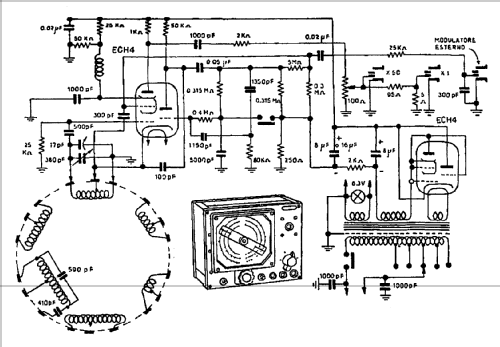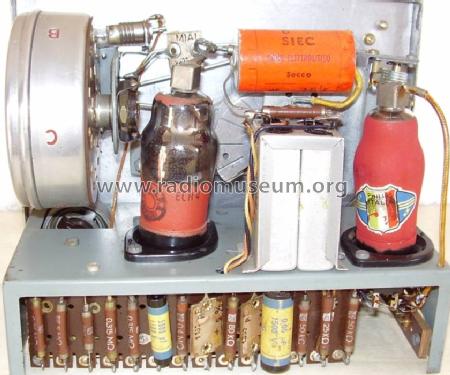Oscillatore 145
MIAL; Milano
- Pays
- Italy
- Fabricant / Marque
- MIAL; Milano
- Année
- 1946
- Catégorie
- Appareils de mesure et de dépannage (matériel de labo)
- Radiomuseum.org ID
- 112893
Cliquez sur la vignette du schéma pour le demander en tant que document gratuit.
- No. de tubes
- 2
- Gammes d'ondes
- Bandes en notes
- Tension / type courant
- Alimentation Courant Alternatif (CA) / 110-220 Volt
- Haut-parleur
- - - Pas de sortie basse fréquence
- Matière
- Boitier métallique
- De Radiomuseum.org
- Modèle: Oscillatore 145 - MIAL; Milano
- Forme
- Modèle de table générique
- Dimensions (LHP)
- 195 x 155 x 95 mm / 7.7 x 6.1 x 3.7 inch
- Remarques
- This is a very compact RF test generator; Internal or external AM modulation; Frequency range: 100 kHz to 22 MHz in six bands. Tuning coils are inside a rotating drum. Requires two E1R tubes, but other listed types can be used. The available unit is equipped with one ECH4 and one EF6 tubes.
- Poids net
- 2.5 kg / 5 lb 8.1 oz (5.507 lb)
- Prix de mise sur le marché
- 11,000.00 ITL
- Source
- -- Schematic
- Littérature
- Magazine L'antenna, July/August 1946
- Auteur
- Modèle crée par Emilio Ciardiello. Voir les propositions de modification pour les contributeurs supplémentaires.
- D'autres Modèles
-
Vous pourrez trouver sous ce lien 14 modèles d'appareils, 11 avec des images et 10 avec des schémas.
Tous les appareils de MIAL; Milano
Collections
Le modèle Oscillatore fait partie des collections des membres suivants.
Contributions du forum pour ce modèle: MIAL; Milano: Oscillatore 145
Discussions: 1 | Publications: 4
I have a identical generator, but mine is labeled LAEL 145 instead of MIAL 145, so I figure it to be more recent (MIAL later keep its original name only for capacitors, potentiometers and other parts). It is also equipped with a Ech4 and an unmarked octal black glass tube as rectifier, could be a 6H6 but I don't know for sure. E1r tube was probably used only in early series: it was a military all purpose triode exode used at its time in all stages (even as audio output and rectifier!) in some military sets, this for having only one tube type to keep as spare. In an old radio text i read that it is electrically an ECH3 but with theECH4 connections layout.
Enrico Bonisolo, 20.Sep.07




